CROWD-FOTO BARCELONA
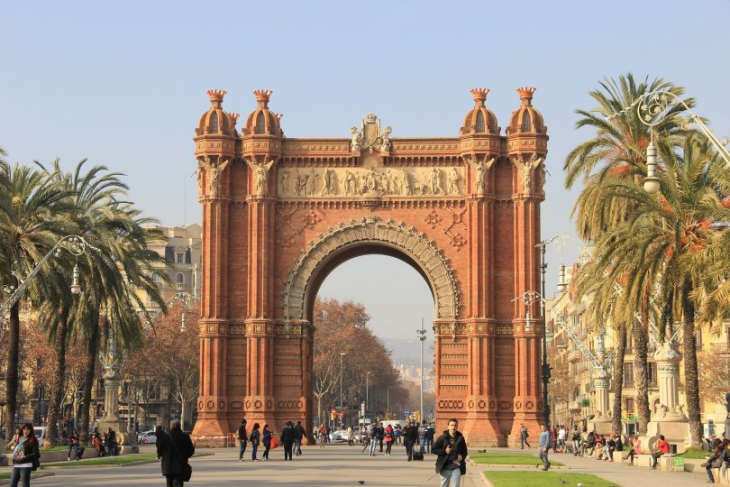
Arc de Triomf : Image from shbarcelona.com
This is Arc de Triomf, a structure mainly built as a welcoming gesture. Built with warm red intricate brickwork, maybe one could say it is a symbol of the Catalan’s warm welcome. With such a nice gesture, one would normally assume it is received as warmly. This is true in some cases; opinions in review websites, such as TripAdvisor, are generally pretty good. But for the remaining who thinks otherwise, there would be comments such as:
“A fun place to stop for a photo… not sure whether we would have come”. For such review to be at the topmost in the website, to visit would be very unappealing. The “Arc de Triomf” is also often compared to the much bigger “Arch de Triomphe” in Paris; and other comments also express disappointment at the lack of general information or narrative.
The reviews were valuable insights on people’s engagement with the arc which were taken into account as the project progressed on.
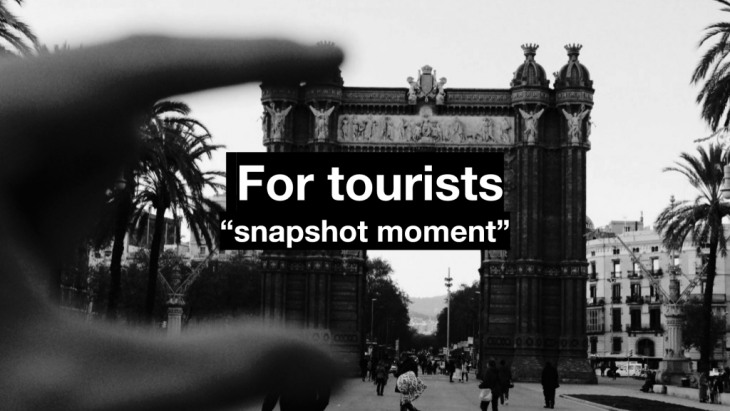
For tourists, the appeal of the arc is momentary; a snapshot. What it is is a commemorative monument, therefore, there’s nothing really to interact with. Moreover, there’s nothing regarding its history or relevance to at least read. It is always compared to the much more massive arch in Paris, and it just couldn’t quite compare with the other nearby attractions like the Sagrada Familia. For some, a single photo is enough before they move on to another area. For locals, on the other hand, it has a more functional quality. Arc de Triomf is not a structure every tourist knows of, but every local would. Which is why it is like a navigational feature, a meetup place. However, this as well is not actually in relation to the arc.
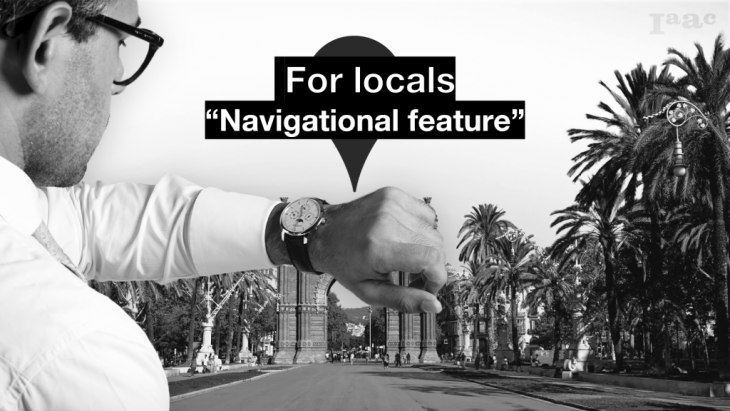
Arch de Triomf as a Monument
That is how it is today. But being a commemorative monument, there must be importance to it – something worthy enough to be commemorated. This importance could be traced back to 1888, the Year of the “Barcelona Universal Exposition”. The expo was Spain’s first international world fair which spanned around 8 months – from the 8th of April till the 9th of December. Around 2 million people participated from 30 different countries. The arc may not be the only one to be built for this event but it was considered as the gateway or “opening act” for the expo.
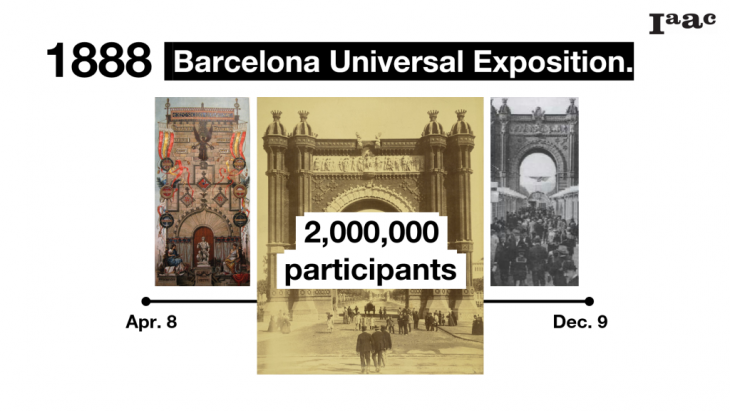
New Ways of Making People Aware
Going by all of the previous information, the goal is to make new ways of making people aware and engage with “Arc de Triomph”. Since a heritage structure is involved, the project was set to be in partnership with the Barcelona city governance and Barcelona Cultura.
Defining the Boundary
The first step to the project was to actually define the extents of the intervention. The location of the arc is at Passeig de Lluis Companys but the focus was locked down to the actual arc. By creating this boundary, more of the focus would be directed to the structure’s inherent qualities. The arc being a heritage structure meant that any direct engagement should, by no means, tamper with the intricate façade. Thus, the resulting approach was to veer away from its most prominent feature and look for areas that are often overlooked. Normally the arc functions as a gateway, a passage. It has an interior area or portal that’s not entirely wide but significantly high in terms of human proportion. It’s a space with not much thought given to as one would pass by.
And that could be where the potential lies, by exploring the negative space – from the entirety of the arch and zooming further to its interior span. There could be a way to elevate the act of just walking through, by exploring the possibilities of this limited space. It could be the key to finding new ways to make people aware of and engaged with the arc.
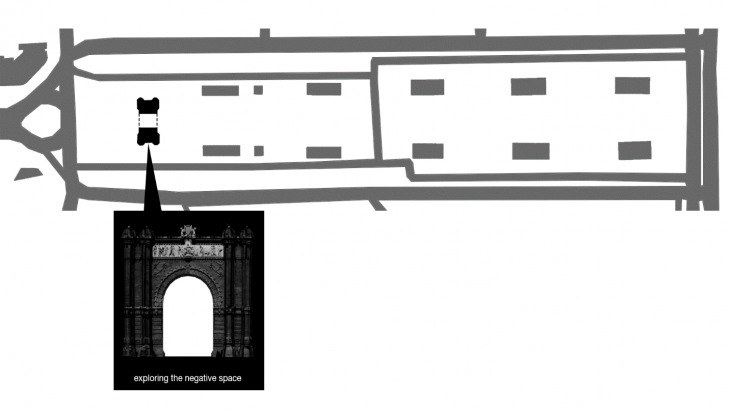
User engagement, beneficial cause, a city-wide event, and relevance: these could be the factors to make it appropriate and plausible. The first factor which was taken into account was analyzing how people could actually get engaged. Having an element of surprise was one factor: something to spike up their current engagement. Another thing would be to have a straightforward concept. It had to be for everyone, so it should be a concept that’s easy for anyone to grasp.
The project’s main inspiration is roller-coaster souvenir photos. These photos are taken at every end of a rollercoaster ride, but one can never really tell how it turns out. Additionally, the concept of souvenir photos is a fairly easy concept to grasp. This was how the concept of CrowdFoto came to be.
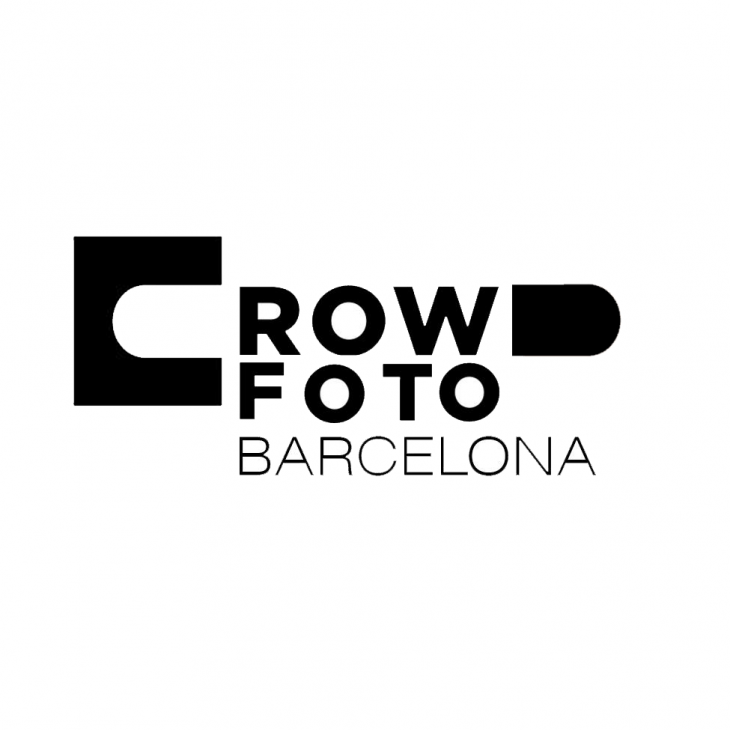
CrowdFoto Barcelona
User engagement
The concept for CrowdFoto Barcelona, to put it simply, is a combination of taking souvenir photos and ambient crowdfunding. Basically, anyone who passes through the arc, gets a snapshot taken through motion activated sensors. This would not be just any snapshot as it would be a panoramic ceiling view encompassing the entire inner wall. For those unaware of such function, a machine would be waiting for them on the other side of the arch to show their candid photo. They then get a choice to pay and take the souvenir photo or to go back and retake another one.
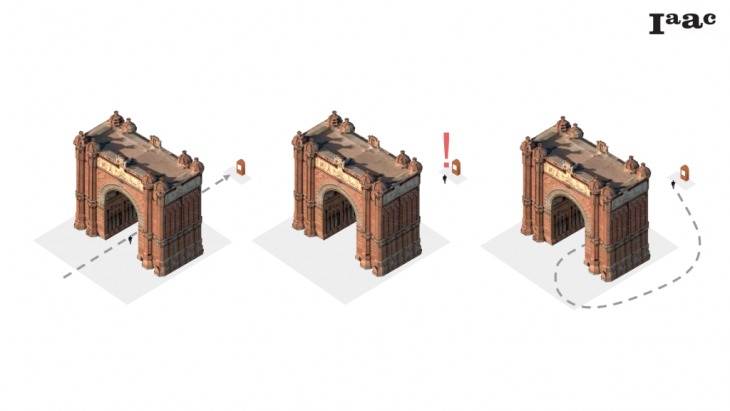
Beneficial cause
To add to another layer to this intervention, there had to be some sort of beneficial cause. By establishing that 50% of the earnings go to the project partners: Ajuntament de Barelona and Barcelona Cultura, money could be saved up for heritage conservation and preservation. As such it would be an ambient crowdfunding project as well. Beyond user engagement, it would beneficial to the arch in general, as the arch basically funds itself.
City-wide event and historical relevance
To push things a little further, was to devise a system that the users actually anticipate for – something that urges them to engage. By introducing the CrowdFoto rewards system, 50% percent of the earning goes back to the users.
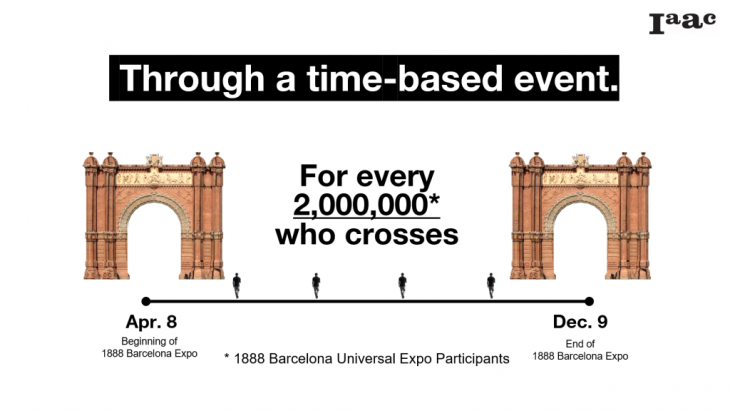
The rewards system will be very similar to the lottery system. It will be a yearly event spanning from the 8th of April till the 8th of December. Using these dates would be one way to ingrain in people’s minds the monument’s historical relevance. With CrowdFoto’s system, every 2 millionth person who crosses through the arch and avails a photo gets to be added to the winner roster. On the 9th of December, wherein a special event will be held at the paseo, the winning photos get shown one by one as the winners are announced. The allotted percentage for user rewards is then divided among winners and the winning lot gets to enjoy their holidays with these rewards.
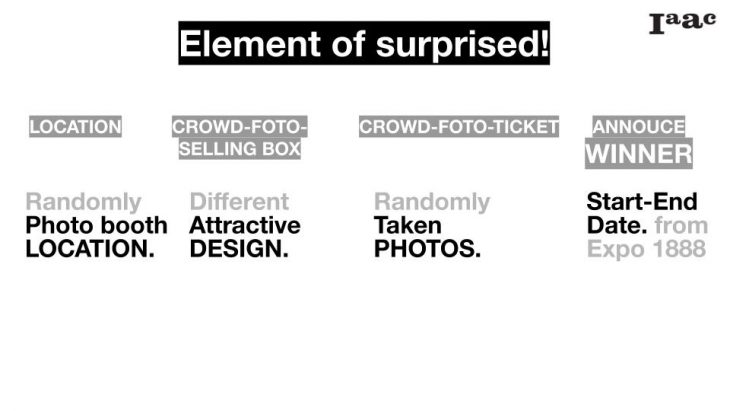
The Crowd-foto system also designs, in more detail, an element of surprise to make it more interesting.
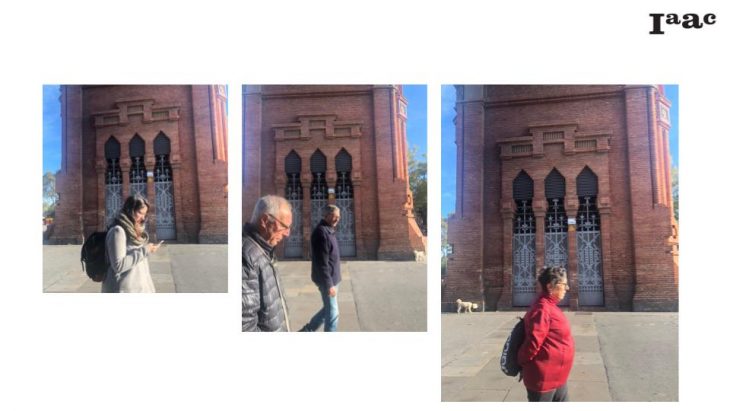
Experiments were done to explore different camera angles, in order to find a satisfying output.
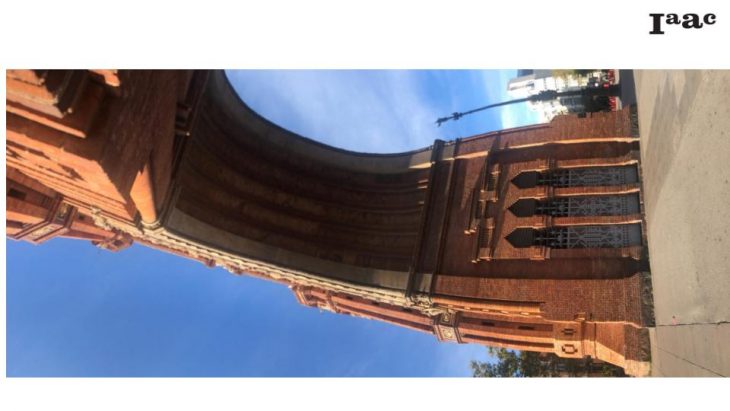
This required special techniques to make the photos more attractive as a vertical panorama.
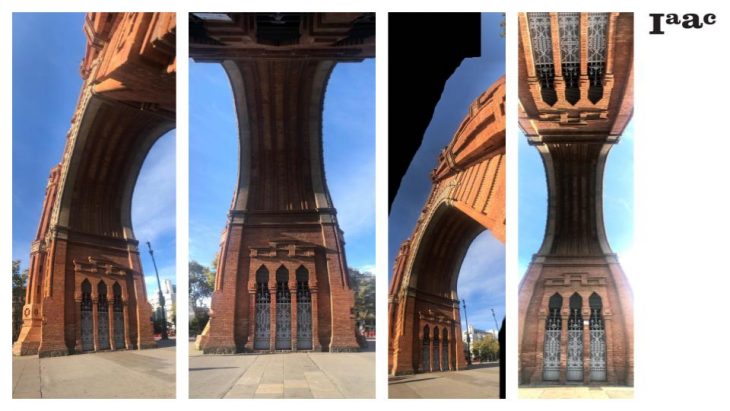
People will get different angle shots following the concept of randomly taken photos.
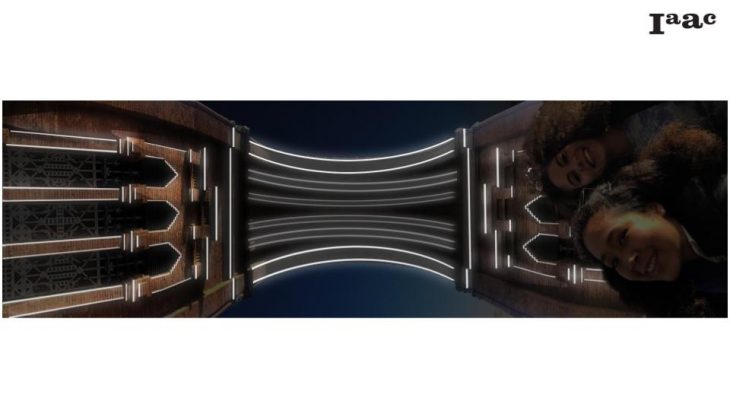
Night scene
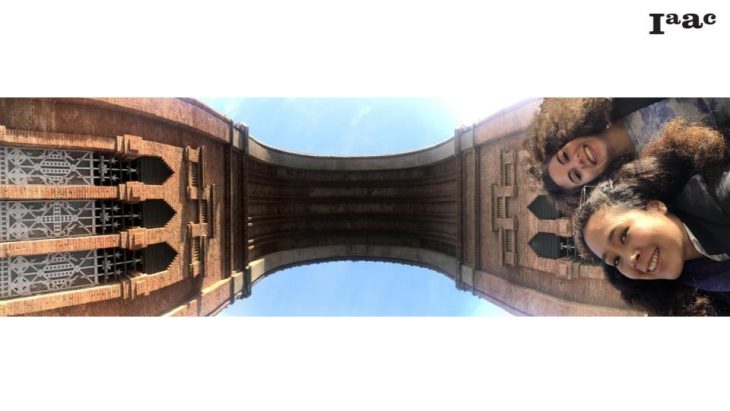
Day time
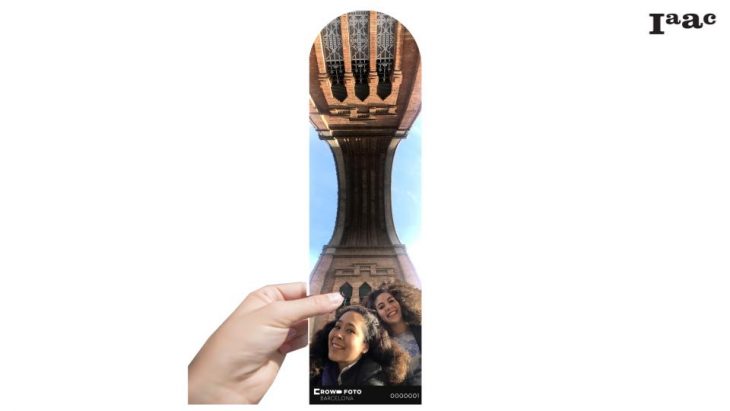
CrowdFoto ticket and rewards claim stub. Keep it!
The Arc the Triomf, used to be the gateway that opened Barcelona to the World. In the 1888 Universal Expo, crossing the gate welcomed participants in celebration. Today, there are still ways for the arc to create something nice for the city.
In summary, Crowd-foto is a design system to help the city raise money for heritage preservation and conservation, make good memories for tourists, and to make the locals engage with the arc more. By borrowing the idea of crowdfunding and devising a digital system around this idea, there could be ways for heritage to not be uninvolved and isolated in their own space; and rather, to be an independent element that provides new ways of engagement and a new culture to its space.
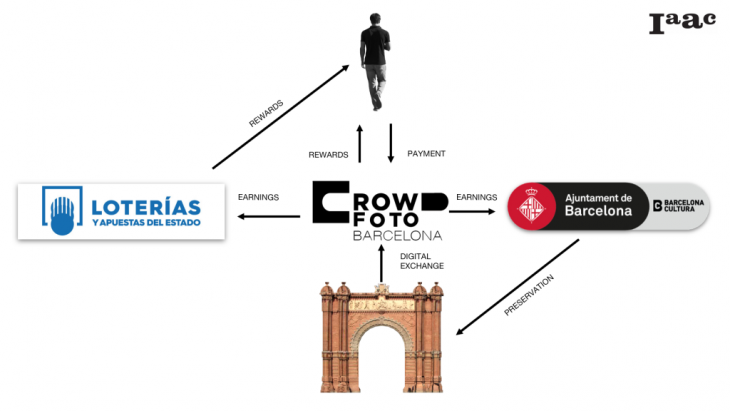
Crowd-Foto Barcelona is a project of IaaC, Institute of Advanced Architecture of Catalonia
developed at Master in City & Technology in (2019/2020) by:
Students: Pawitra Bureerak, Rovianne Santiago, Michelle Rodriguez
Mentor: Nicolay Boyadjiev
References:
Es.Wikipedia; Barcelona Cultura; Ajuntament de Barcelona; Loterias y Apuestas del Estado